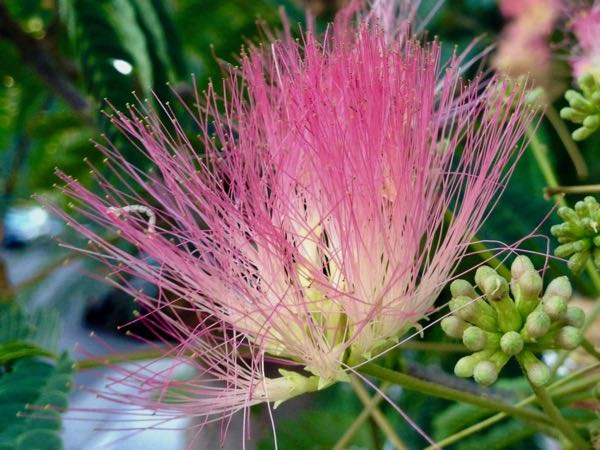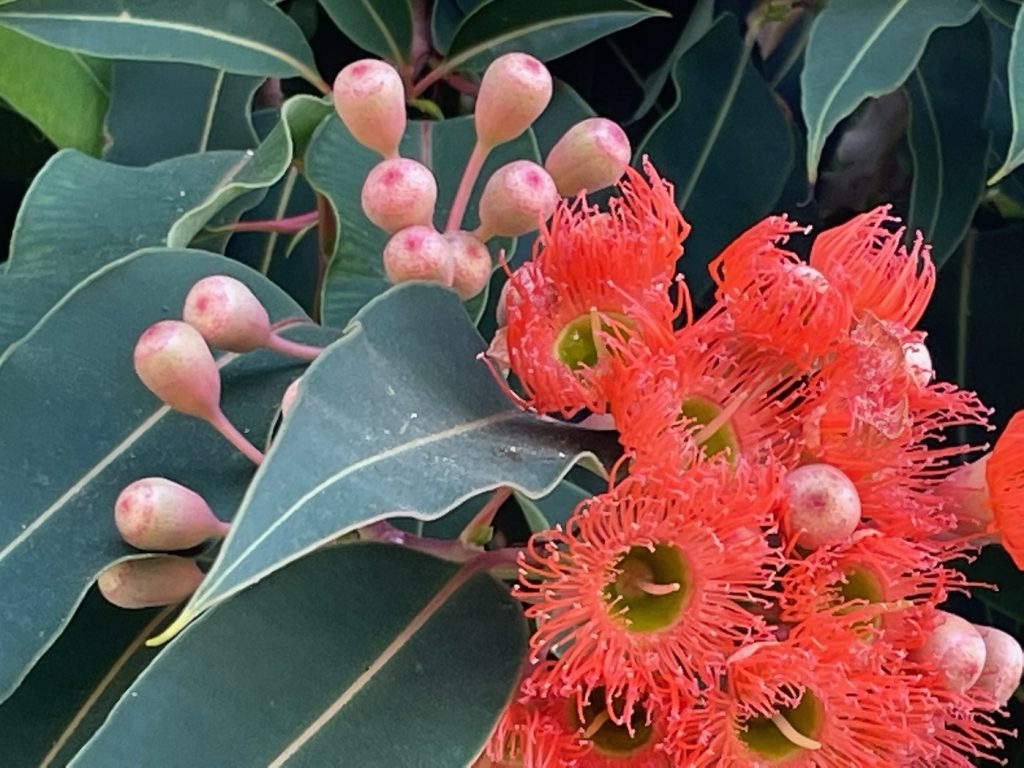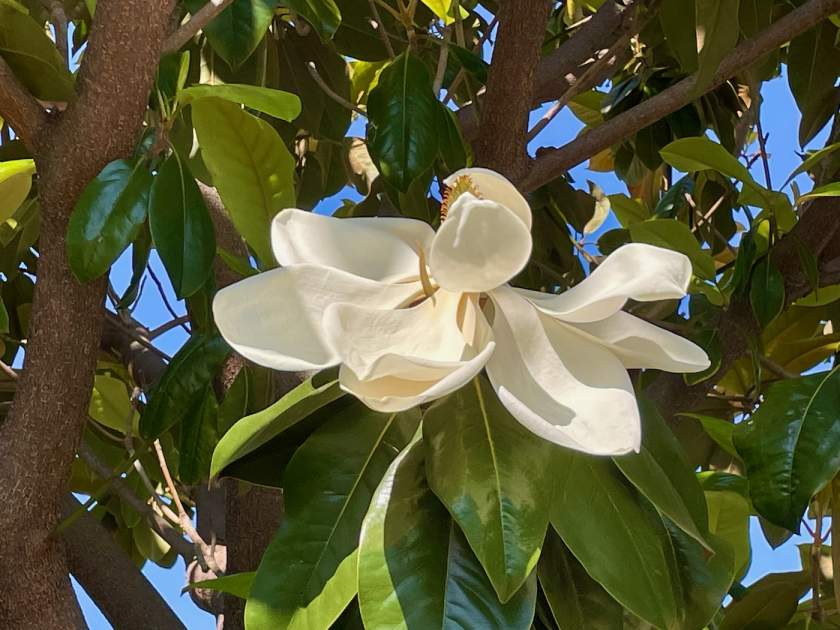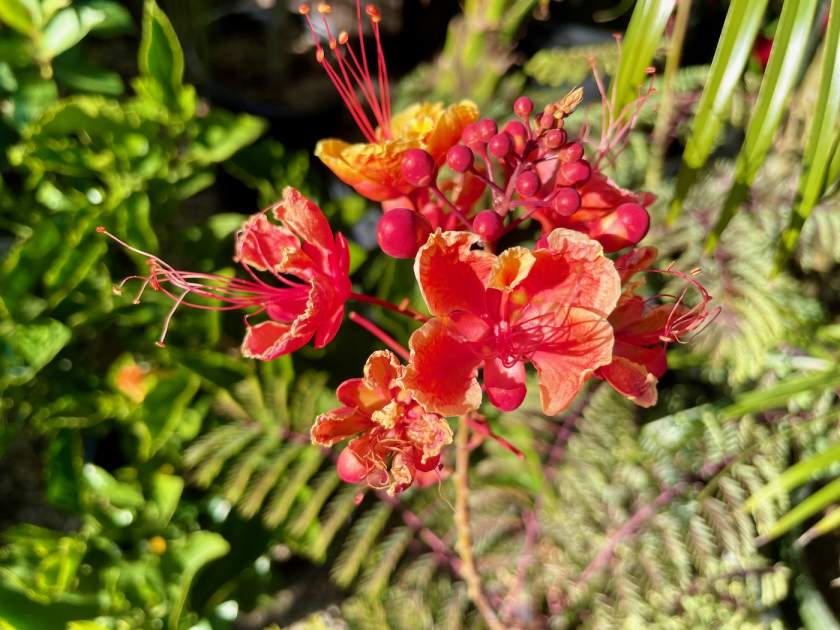Albizia julibrissin is also known as the Acacia julibrissin, Pink Siris, Silk Tree. In Japan they call it Nemunoki, Nemurinoki and Nenenoki or Nemu Tree. Other names include Persian Silk Tree, Lenkoran Acacia, the Chinese Silk Tree or Mimosa, The Pink Silk Tree, or the Bastard Tamarind. The new Persian name is Shabkhosb شبخسب. It is part of the Fabaceae family of plants.
Albizia julibrissin is native to Iran, stretching east to China and Taiwan. The name is Julibrissin was taken from Persian. Gul-i-abrisham گل ابریشم means silk flower. In Iran, it is known as the Silk Tree.
Albizia is named after Filippo degli Albizzi, an Italian nobleman. He first discovered the tree. The plant was first published in 1772, by Antonio Durazzini (1740-1810), an Italian botanist who was part of the Botanic Academy of Florence.
Albizia julibrissin: The Enchanting Silk Tree with Many Names
In the world of botanical wonders, few trees hold as many names and enchanting qualities as Albizia julibrissin. Known by monikers such as Acacia julibrissin, Pink Siris, Silk Tree, and even Nemunoki, Nemurinoki and Nenenoki or Nemu Tree in Japan, this tree weaves a story that spans cultures, languages, and continents.
Other names include Persian Silk Tree, Lenkoran Acacia, the Chinese Silk Tree or Mimosa, The Pink Silk Tree, or the Bastard Tamarind. The new Persian name is Shabkhosb شبخسب. As a member of the Fabaceae family, Albizia julibrissin leaves an indelible mark on landscapes from its native Iran to the far reaches of China and Taiwan. Join us as we explore the fascinating tapestry of this tree, from its history and nomenclature to its distinctive features and cultivation.
A Silk Flower by Any Other Name
Albizia julibrissin is native to Iran, stretching east to China and Taiwan. The name Julibrissin was taken from Persian. Gul-i-abrisham گل ابریشم means silk flower. In Iran, it is known as the Silk Tree.
Discovery and Dedication
Albizia julibrissin‘s name pays homage to Filippo degli Albizzi, an Italian nobleman who first encountered this tree. Its botanical debut occurred in 1772, thanks to the efforts of Antonio Durazzini, an Italian botanist affiliated with the Botanic Academy of Florence.
Graceful Canopy and Responsive Leaves
With a mature height of 16 meters (52 feet), Albizia julibrissin boasts a broad crown, offering a respite of shade under its arching branches. What sets this tree apart is its leaves’ intriguing response to touch and weather. They gracefully close at night and during rain, adding an almost sentient quality to the tree’s persona.
Floral Symphony: Fragrance and Elegance
Bipinnate foliage adorns Albizia julibrissin, with oblong leaflets that contribute to the tree’s overall grace. In the summer, the tree bursts forth with fragrant flowers, their delicate appearance belying their resilience. These flowers showcase a small calyx but take center stage with their large clusters of stamens, stretching up to 3 centimeters (1.5 inches) in length. Whether blushing pink or pristine white, these stamens bear a striking resemblance to threads of silk, earning the tree its beloved Silk Tree moniker.
Nectar Oasis and Seed Legacy
Albizia julibrissin‘s floral allure is not in vain, as its blooms attract a bustling community of hummingbirds, bees, and butterflies. The flowers offer a sweet source of nectar, contributing to the delicate balance of pollination in its ecosystem. Following this botanical ballet, Albizia julibrissin bears flat brown pods of seeds, each pod extending approximately 20 centimeters (8 inches) in length.
Cultivating the Albizia julibrissin:
For those intrigued by the allure of Albizia julibrissin, cultivation offers a rewarding journey. Plant this tree in the embrace of sunlight and well-drained soil, ensuring its resilience in diverse conditions. Propagation is possible through seeds, which benefit from a soak in hot water before sowing. Alternatively, consider semi-ripe cuttings during the warmth of summer. While generally resilient, keep an eye out for verticillium wilt, ensuring the Silk Tree continues to flourish.
Albizia julibrissin is more than a tree—it’s a testament to the interconnectedness of cultures, languages, and nature’s artistic marvels. From its discovery by an Italian nobleman to its presence in gardens around the world, this tree captures hearts and imaginations. As we explore its diverse names, its elegant form, and its role in pollinator ecosystems, we are reminded of the universal appeal of nature’s treasures and the beauty that weaves the tapestry of our shared planet.





